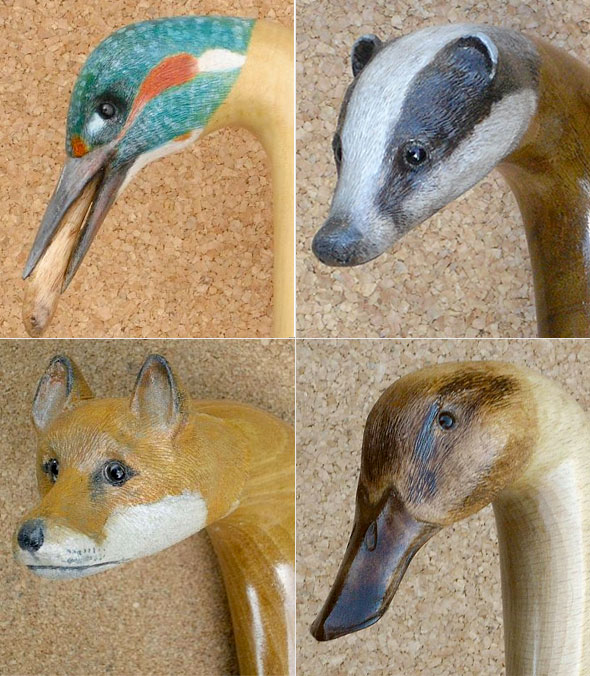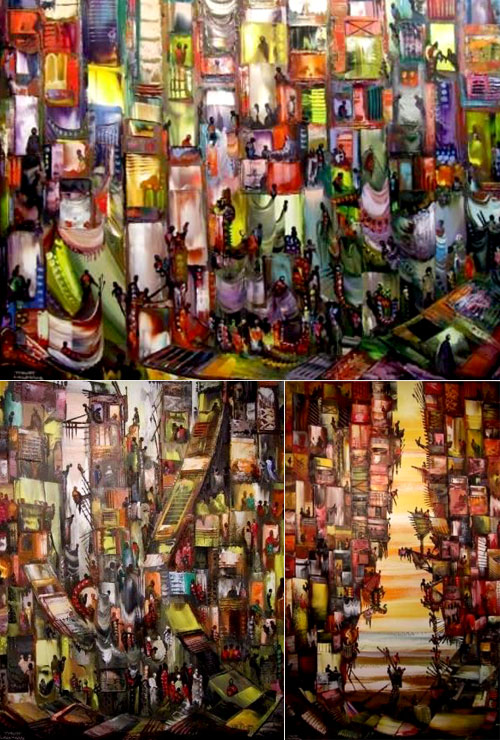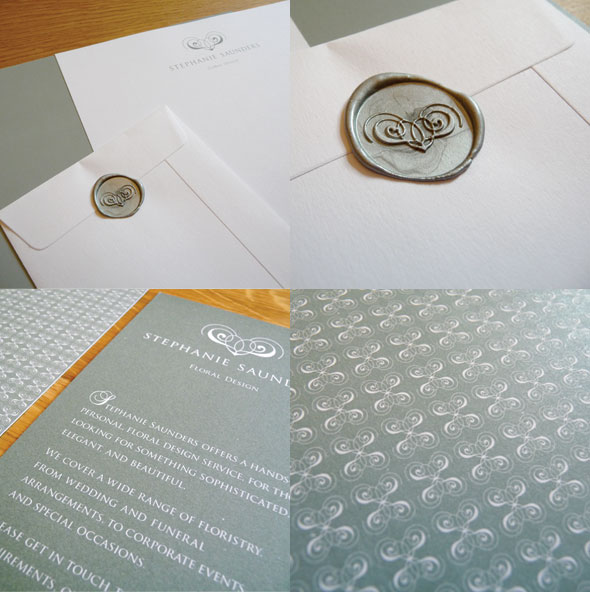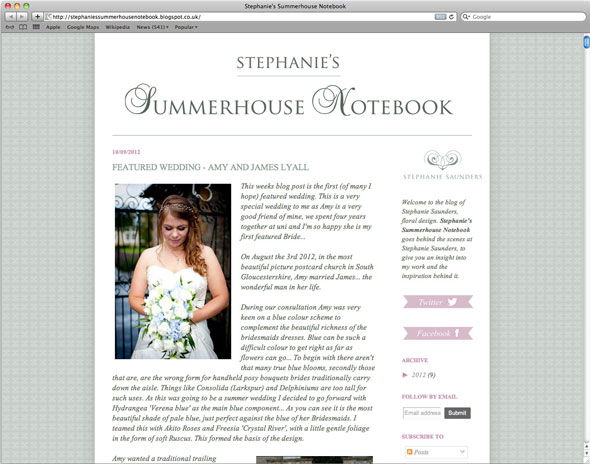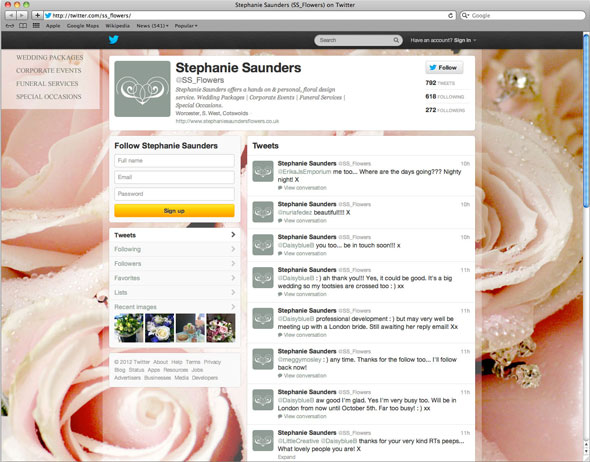Just lately we have heard some real horror stories about very negative experiences that people have had with design companies. This is a huge shame for businesses who then go without, and also a huge shame for the design industry as a whole, which ends up with a negative reputation.
Experiences have often been brought to light when we have been discussing projects with new clients, and they have been learning the process in which we manage things. It struck me that many people
don't seem to know what to expect from the process when using a design company, so I thought it might be a good thing to tell you a bit about how we work, in order to give you some insight of what you
could expect.
Of course all companies will work very differently, so this is very unlikely to be
exactly how other design companies operate, but at least it gives you some idea. We hope that from this, bad experiences can be avoided for anyone who is needing the help of a professional designer, because we truly believe -
wholeheartedly - in the power of good design.
First Contact
This crucial first stage is all about getting to know each other.
You need to feel informed about how things work, in order to establish a level of trust with the company, while
they need to ensure that they deliver this.
We always find the first contact a really important time to glean as much information as possible on what our potential client could possibly need, so ideally, we like to meet up for a coffee and a chat before we do anything - this meeting is free, and carries no obligation. This enables them to get a feel for who we are, which establishes a level of trust, and it also gives us the opportunity to discuss their vision and their needs. Clients who are looking for a full brand development often feel overwhelmed and unsure of what materials they would need. By discussing this with them, we are able to advise and can help them to prioritise things within their budget. If a client is is not local to us, we can do all of the discussing via phone or email, and if the client is after something specific like a logo, then a meeting like this is less important.
Ensure that you are clear on whether a meeting like this is charged for. Some design companies
do charge for consultations like this, and should make you aware of this before arranging - you should not
be expected to pay for things like this if the costs are not pointed out to you first.
Gaining an Estimation
The next stage is to supply the client with an estimation, so that they can get familiar with costs. It is always helpful to send an estimate across that covers a whole host of eventualities, and all with the costs broken down, so that they have it to refer to for their budget - that way they can organise their funds to schedule bits in over time if needed. We are always striving to be as flexible as possible in this way, to work around budgets and make the most of funds for the client, which is of course key for small businesses. Aim to find out
how flexible your chosen design company is, and their processes, in order
to feel secure in your decision making.
This stage is also very important to make our potential client feel at ease and informed about what they will be getting for their money. For these reasons, we always give an overview of the process with the estimation - this covers what they will get at the end of a project and the process in which we work.
Some companies may not bother with estimates, and go straight into quoting, and you need to be clear on what this means. We prefer to estimate first in order to help clients gain a clear idea of costs
before they commit to anything, and also to allow them to plan around their budget. Below, we outline what our procedure for quoting is, and what you should expect to be informed of.
Receiving a Quotation
After the initial estimate has been sent across and our potential client has decided on what they would like to proceed with at that point, we would then draw up a quote. The quote outlines the project details, hours that will be spent on the project, and the costs, all broken down with the deposit information. This is teamed with a copy of our terms and conditions, which clients are urged and expected to read before confirming that they are happy to go ahead with things, and before paying their deposit.
No company should begin your project until you have confirmed that you wish for them to do so.
The most important thing to look out for in terms & conditions is payment details and the cancellation policy. Payment wise, you will need to know what you will be expected to pay and when, and what you will be getting for your money. In our terms and conditions we have included a brief outline of the different stages of a project, and clear details on copyright and cancelation. If everyone knows where they stand, then communication is at its best, and trust can be established between company and client. You can view our terms & conditions as a rough guide,
here.
Money is obviously a huge factor to small businesses, and this can make a project feel really daunting to those who have never experienced working with a professional designer before. When factors like this are not addressed by a design company, businesses can feel put off and will often try to do their own brands themselves, which is a huge shame. Not only it this obviously bad for the design industry, but also for the small businesses themselves, who end up feeling constantly held back by their image.
The Briefing
Usually, if we have had a meeting with a client at first contact, then we would have taken a full brief at that point, but if we have not met up with them, (because they are not local or because they are after something specific) then we would usually wait until now to take a full brief.
The briefing stage is
by far the most important stage of the project for us, as it is a time for us to really get to know a business. There is no better way to get to know what a business needs from the design process, than getting into the driver's seat and learning about them. So, in the briefing stage we ask lots of questions about the business, the owner, and their goals, to really gain a deep understanding of who they are and what they need.
After a brief has been taken, we always get it typed up and sent over to the client for them to read through. This is not only important for us to ensure that we have understood everything correctly, but for clients to feel that we have, giving them confidence and enthusiasm in the process.
We strongly doubt that there are any design companies who would not take a brief, since it would be impossible to be properly equipped to enter the design stage and create a relevant solution without taking a brief. However, just be mindful of this when dealing with a company - you need to feel like they
know your business, in order to trust that the end result is going to be representative of your business.
First Ideas
No design company should expect to deliver a finished solution to a client at first visual.
Where logo's are concerned, we usually offer a small number of solutions for a client to look at during
the first visual stage, along with supporting descriptions. This gives the client insight into the different solutions and enables them to supply us with feedback on which design they would like to have developed.
The key thing here is choice - although we are the professionals when it comes to working up a good strong solution that will work for that business, the client must
be and
feel involved in the process, and have a choice.
Solution Development
Having gained feedback on the chosen solution, it would then enter the development stage, where any changes would be implemented, and the artwork would be perfected for use. The client would then be provided with a proof of the finished artwork for them to confirm and sign off ahead of supply or production.
It is
really important that you are given the opportunity to confirm that you are happy with the artwork, before it is supplied or printed, and you are invoiced.
Supply of Artwork
This is the end stage, where materials are supplied to the client. If it is a logo that has been developed, then the full suite is sent over electronically with details on how to use the different versions supplied.
If however there are materials involved, then of course you should be aware of whether the design company manages print and production, and what stage you will be expected to take over, if there is one.
In our case - and in the case of the majority of other design companies we are sure - we manage the process all the way through, from first contact to delivery of materials to your door step. In this day and age, there will be very few design companies who do not manage print and production, since the two processes are so closely linked in the result of the end product, but you should be well informed
either way.
Some clients like to take the print and production into their own hands - especially if they have a contact themselves that they have a good relationship with. It is however part of our service to advise on which print technique would be good for a specific job, which is very important since it can make or break a piece of design work. Find out if a design company offers this service, and is willing to advise you on this kind of thing.
While a lot of design companies outsource print, you should
always expect to be informed of estimated costs upfront, before you decide on which technique to go ahead with. Print techniques vary
massively in cost, so you will need to be well informed of your options beforehand. A lot of design companies put fees on top of print costs, for their time taken managing it all - what you need to be aware of is those that seemingly
pluck figures out of the air. It is an unfortunate thing that some companies throw on huge fees that are not at all relative to their time taken managing production, so you do need to be wary of this.
I think that this just about covers the need-to-know information, and we really hope that it proves useful to anyone who is seeking help with their image. Good design is
so important to business, and professional designers have a huge and important role in this. Just make sure that you choose wisely - with the industry so saturated with design companies nowadays, it can be a case of sorting through the rough to find the gems that will be right for you. The design process is
such an exciting thing, and should result in an image that represents
your business as an individual and communicates
your personality and ethics when you can't be there. It is a asset that gives your business results, helping you to grow, and making you feel like you might just
burst with pride. That is the power of good design!
We are of course open to questions if any of you have any, so do feel free to leave us messages in the comments box below.
















